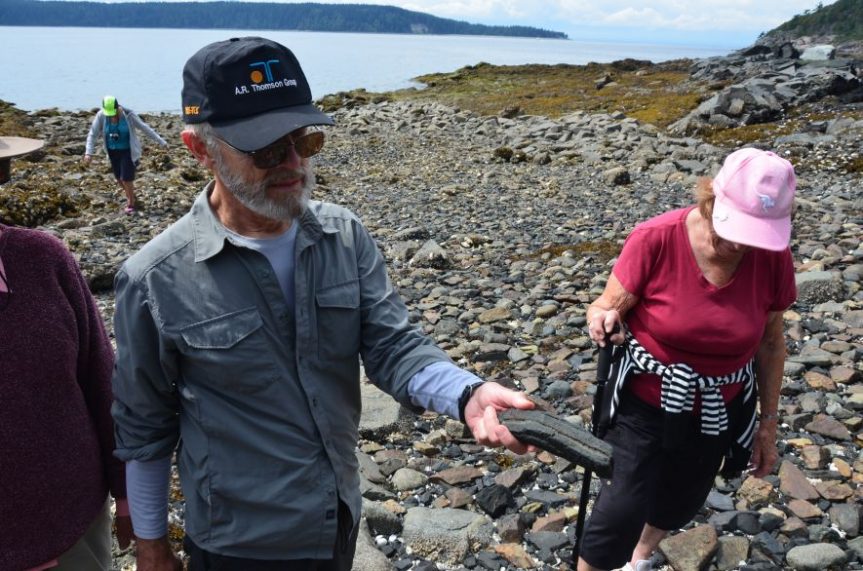
Wrangelia: Triassic aged rock at Hidalgo Point on Hernando Island – M. Koleszar photo

Recent (Quaternary) sediments at the northern end of Hernando Island – M. Koleszar photo

More Quaternary sediments – M. Koleszar photo

Dipping Triassic rock layers at Echo Bay, Twin Islands – M. Koleszar photo

“What is this rock?” – the 1st question of a young geologist! – M. Koleszar photo

Grey dike cutting across host rock at Echo Bay – M. Koleszar photo

Reddish intrusive dike, Iron Point, Twin Islands – M. Koleszar photo

More dikes, with older Wrangelia sedimentary rock being examined in the background – M. Koleszar photo

How Iron Point got its name! – M. Koleszar photo

Barbara talks rocks…

…and Barbara’s rocks talked! M. Koleszar photo

A day in the field is ALWAYS better than a day in the office! – M. Koleszar photo

Quaternary sediments, Cortes Island – M. Koleszar photo

A rare Agarikon fungas, Kinghorn Island – M. Kaleszar photo

Cruising past Kinghorn Island – M. Koleszar photo

in addition to the rocks, there was some wildlfie, too (Kinghorn Island) – M. Koleszar photo

Rounding Kinghorn Island into Desolation Sound – M. Koleszar photo

The Red Point unit (biotite granite) at Cortes Bay – M. Koleszar photo

Harbour seals adorning the rocks, Copeland Islands – M. Koleszar photo

More dikes in the Coast Plutonic Complex, Copeland Islands – M. Koleszar photo

Xenoliths (fragments of older rock within an igneous body), Copeland Islands – M. Koleszar photo

More zenoliths – M. Koleszar photo
Cortez Island Geology
by Tom Koleszar, 26 July 2014.
Twelve naturalists, led by our own Barbara Sherriff, boarded the Misty Isles with Captain Mike Moore for a day-long geological tour of Hernando, Twin, and Cortes Islands.
We first cruised past Hernando Island before landing at Iron Point at the south end of Twin Islands, where we had ample opportunity the get our hands on the rocks of Wrangelia and the Coast Plutonic Complex. Back aboard the Misty Isles, we then cruised along the south shore of Cortes Island looking at recent Quaternary sediments and more examples of the plutonic rocks of coastal BC.
For the latter part of the afternoon, Captain Mike took us on a cruise around Kinghorn Island in Desolation Sound and then along the Copeland Islands and back to Lund. Along the way we saw some wildlife and a rare Agarikon fungas on an old growth Douglas Fir (in addition to the rocks and beautiful scenery, of course!)
We had a wonderful day with great weather, and we all learned a lot about the geology of our own area. Special thanks to Barbara and Mike Moore for making it all possible!
























